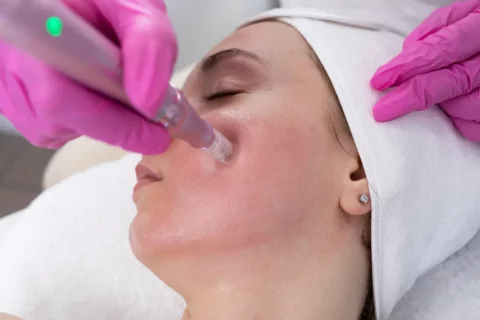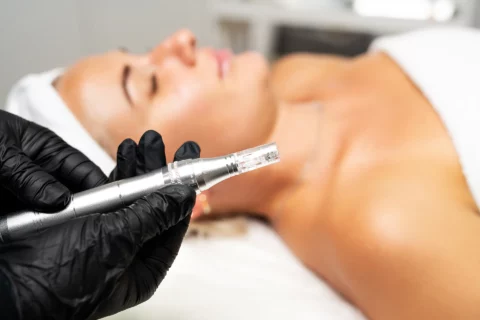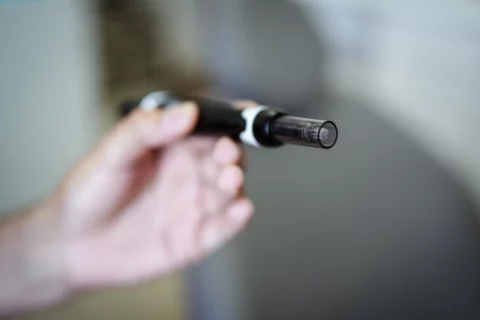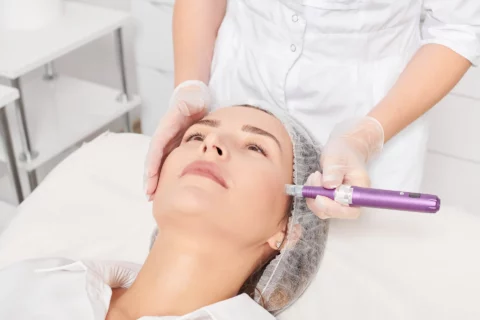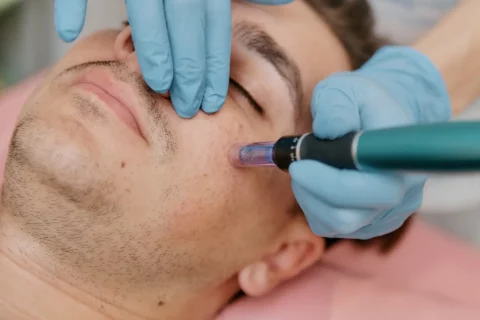Essential Tips and Tricks for Choosing the Right Microneedling Pen to Achieve Stunning Results
Are you on the hunt for the perfect Microneedling Pen to tackle your skin concerns? You’ve come to the right place! In this all-inclusive guide, we’ll delve into the world of top Microneedling Pen available in the market.
We’ll discuss everything from the origin of Microneedling Pens and the advantages of using a Microneedling Pen to choosing the ideal Microneedling Pen needles for your specific needs. So, without further ado, let’s dive into the fascinating realm of the best Microneedling Pens!
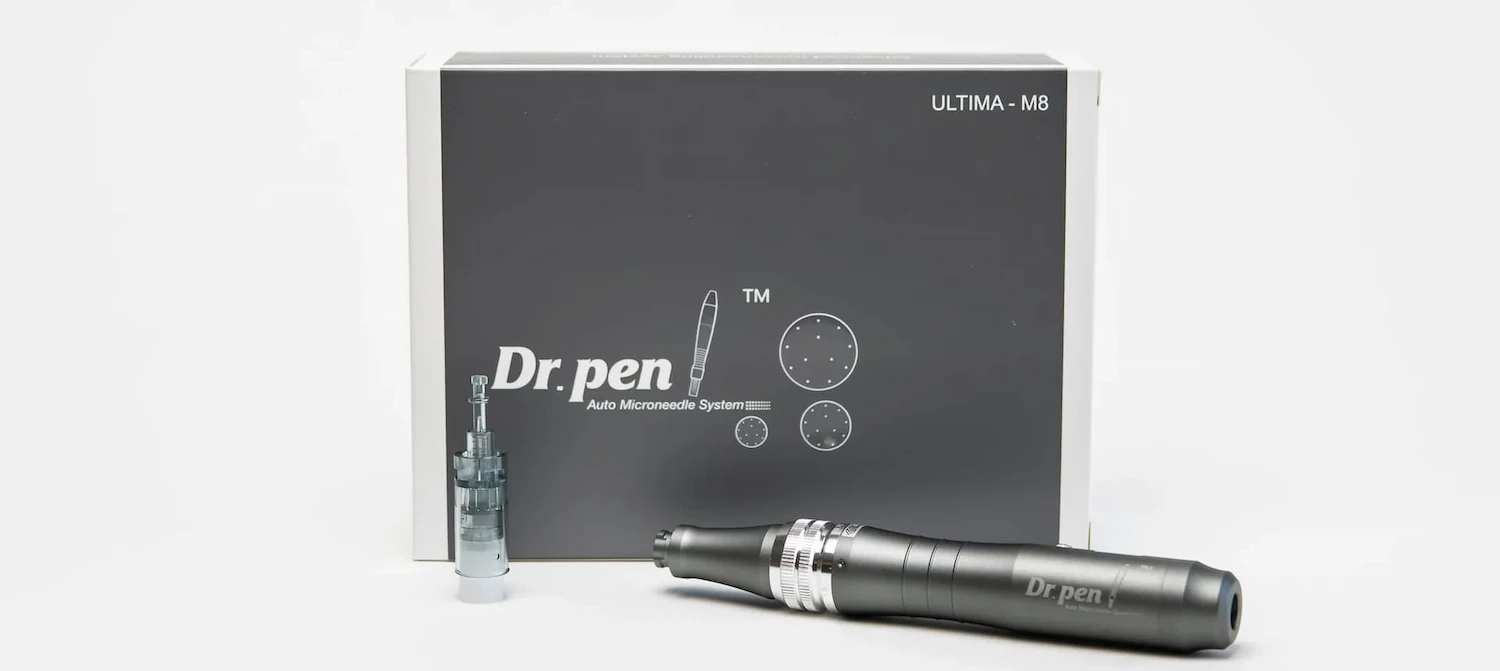
Get Everything You Need for Your Microneedling Pen and More at 20% off Your First Order with Code “20OFF”!
The Microneedling Pen treatment requires only the best equipment to deliver treatments and results your patients will love. Get your best Microneedling Pen equipment and more at FACE Med Store today!
You can create an account here.
The Remarkable Journey of Microneedling Pen: From Origins to Modern Innovations
The Emergence of Microneedling and Derma Rollers
The history of Microneedling Pens can be traced back to the early 1990s when the concept of microneedling first emerged. Dr. Desmond Fernandes, a South African plastic surgeon, pioneered the use of microneedling by introducing a small, handheld device with fine needles to create microchannels in the skin. These micro-injuries stimulated the skin’s natural healing process, promoting collagen production and improving the overall skin texture.
Building upon this idea, the first derma roller was introduced in the mid-90s to early 2000s, featuring a cylindrical barrel with microneedles affixed to a handle. While derma rollers achieved some success, they also faced limitations, such as uneven needle penetration and increased risk of skin tearing due to the rolling motion.
The Introduction of Microneedling Pens
In the late 2000s, the first Microneedling Pen was developed as an innovative alternative to derma rollers. Microneedling Pens addressed many of the shortcomings of derma rollers by utilizing a vertical needle penetration method, which offered more precise and controlled treatment. As a result, Microneedling Pens gained popularity among skincare professionals and enthusiasts alike.
The Modernization and Advancements in Microneedling Pens
Over the years, Microneedling Pens have continued to evolve, with manufacturers introducing various features and improvements. Modern Microneedling Pens now boast adjustable needle depths, electronic controls, and even automatic serum infusion systems. These advancements have made Microneedling Pens more effective, versatile, and user-friendly, cementing their status as a staple tool in the world of skincare.
Discovering Various Microneedling Pen Types: Tailoring the Ideal Choice for Your Skincare Goals and Applications
When it comes to selecting a Microneedling Pen, it’s essential to understand the different types available on the market to find the one that best suits your skincare goals and needs. In this section, we’ll delve into the various types of Microneedling Pens, highlighting their features and benefits to help you make an informed decision.
Manual Microneedling Pens
Manual Microneedling Pens are the simplest and most affordable option, consisting of a roller or stamp design with microneedles attached to the head. These Microneedling Pens require manual pressure to create micro-injuries in the skin, which can be less precise and more time-consuming than their electric counterparts. However, they can still be an effective option for those on a budget or who prefer a more hands-on approach.
Electric Microneedling Pens
Electric Microneedling Pens are battery-operated or corded devices that use a motor to move the microneedles vertically in rapid motion. These pens offer adjustable needle depth and speed settings, allowing for greater customization and precision during treatment. Electric Microneedling Pens are more efficient and less painful than manual options, making them the preferred choice for many users and professionals.
Microneedling Pens with LED Light Therapy
Some Microneedling Pens come equipped with LED light therapy, providing additional skin benefits alongside microneedling. LED lights in different wavelengths target specific skin concerns, such as red light for inflammation reduction and blue light for acne treatment. This combination therapy can enhance the overall results of Microneedling Pen treatments, offering a more comprehensive approach to skincare.
Microneedling Pens with Automatic Serum Infusion
A cutting-edge innovation in Microneedling Pens is the automatic serum infusion feature. These devices are designed with a built-in reservoir that holds skincare serums or solutions. As the Microneedling Pen creates microchannels in the skin, the device simultaneously infuses the serum, ensuring optimal absorption and boosting the treatment’s effectiveness.
The Benefits of Using Microneedling Pen: Unlocking the Secrets to Healthier Skin
| Benefit | Description |
| Acne Scars | Reduces the appearance of acne scars by stimulating collagen production and promoting cell turnover. |
| Stretch Marks | Improves skin texture and elasticity, making stretch marks less noticeable. |
| Brown Spots & Wrinkles | Breaks up hyperpigmentation and plumps up the skin, resulting in a more even skin tone and reduced wrinkles. |
| Rosacea & Redness | Soothes inflamed skin and strengthens the skin’s protective barrier. |
| Scar Reduction | Minimizes the appearance of surgical or trauma-related scars by breaking down scar tissue. |
| Hair Loss | Stimulates blood flow and nutrient delivery to the scalp, promoting hair growth and improving hair density. |
| Enhanced Product Absorption | Boosts the effectiveness of skincare products by enabling better absorption through microchannels. |
| Minimizing Pore Size | Tightens and firms the skin, making pores appear smaller and less noticeable. |
Boost Your Patient’s Skin With A Peptide-rich Face Mask. Stock Up and Get 20% OFF Your First Order With CODE “20OFF”.
Enrich your patients’ skincare routine with a face mask that soothes and reduces wrinkles. Give your patients a skin boost with our carefully-formulated EGF Mask.
You can create an account here.
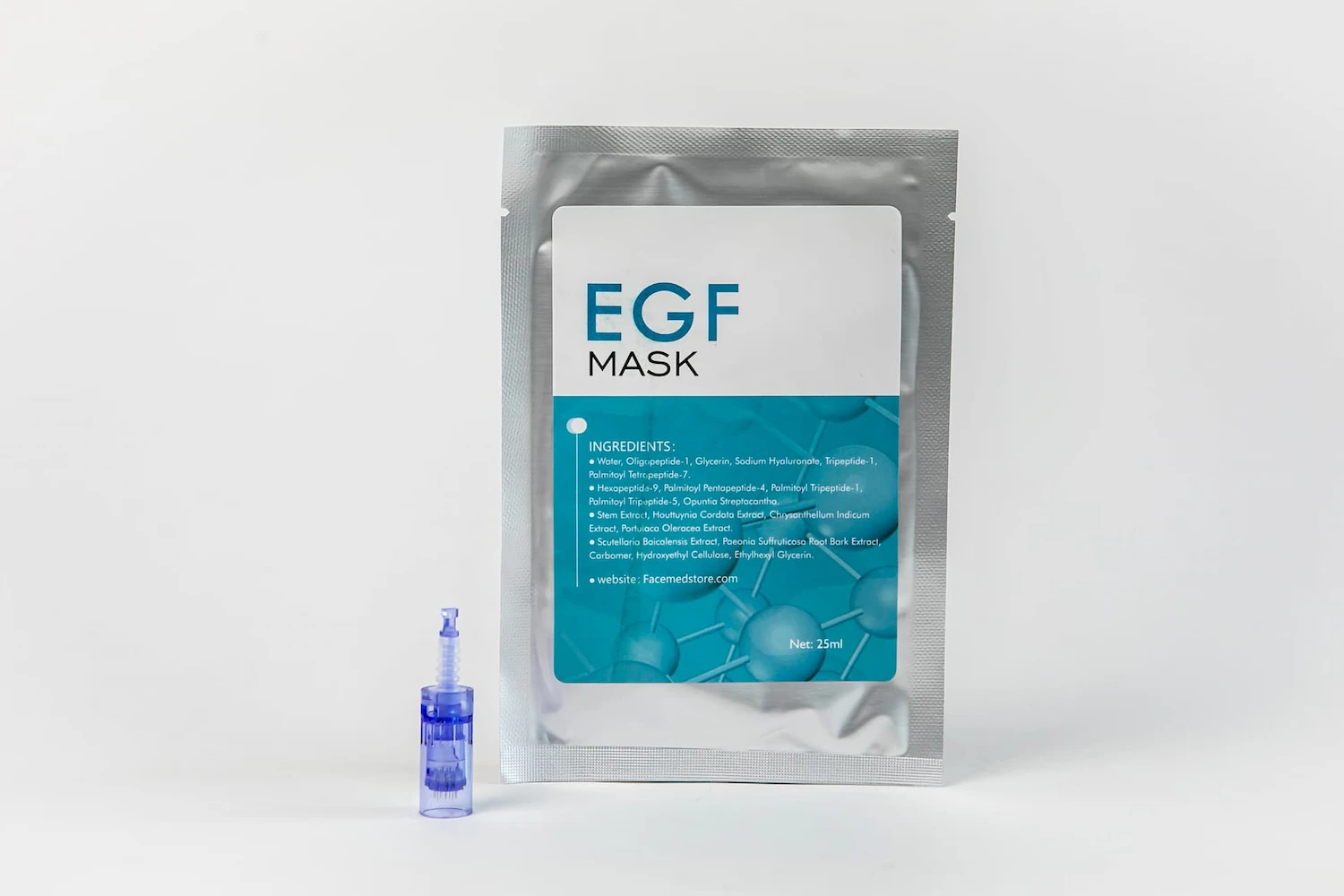
Your Comprehensive Microneedling Pen Selection Guide
Making the right choice when it comes to selecting a Microneedling Pen is crucial for achieving optimal results. To help you navigate the process, we’ve compiled a comprehensive guide that covers essential factors to consider when purchasing a Microneedling Pen, choosing the right one for your needs, and selecting the best needles.
Key Factors to Consider When Purchasing a Microneedling Pen
- Device quality: Ensure that the Microneedling Pen you choose is made of high-quality materials and is durable.
- Ease of use: Look for user-friendly devices that are easy to operate and maintain.
- Available features: Consider the specific features that will best address your skin concerns.
- Instructions for use: Ensure the Microneedling Pen comes with clear instructions on proper usage.
- Warranty: Opt for devices that offer a warranty for added peace of mind.
- Replacement needles: Make sure the Microneedling Pen you choose has readily available replacement needles.
How to Choose the Best Microneedling Pen for Your Needs
- Assess your skin concerns: Determine which specific skin issues you want to address with a Microneedling Pen.
- Research features: Investigate the features that are best suited to treat your skin concerns.
- Read reviews: Consult user reviews to gain insight into the effectiveness and reliability of different Microneedling Pens.
- Consult a professional: Seek professional advice to help you make an informed decision.
Selecting the Best Microneedling Pen Needles
- Thinner needles: These are ideal for treating fine lines and wrinkles, as they provide a gentler treatment.
- Thicker needles: Opt for thicker needles if you’re targeting deeper scars or stretch marks.
- Professional consultation: Consult with a skincare professional to determine the ideal needle size for your specific skin concerns.
Taking Care of Your Microneedling Pen: 5 Tips for Longevity and Effectiveness
Proper care and maintenance of your Microneedling Pen are essential for ensuring its longevity and effectiveness. By following these guidelines, you can help keep your Microneedling Pen in top condition and achieve the best results for your skin.
1. Clean and Sanitize Your Microneedling Pen Before and After Each Use
To prevent infection and ensure optimal treatment results, always clean and sanitize your Microneedling Pen and needles before and after each use. Follow the manufacturer’s instructions for cleaning and sanitizing your device. Typically, this involves using alcohol to disinfect the pen and needles and allowing them to air dry before storage.
2. Replace Needles as Needed
Over time, Microneedling Pen needles can become dull, reducing their effectiveness and potentially causing discomfort during treatment. To maintain optimal performance, replace your Microneedling Pen needles as needed, following the manufacturer’s guidelines for needle replacement.
3. Store Your Microneedling Pen in a Clean, Dry Place
Proper storage is crucial for preserving the integrity of your Microneedling Pen. Keep your device in a clean, dry place, away from direct sunlight and extreme temperatures. Many Microneedling Pens come with a storage case or protective cap to help protect the device from damage and contamination.
4. Regularly Inspect Your Microneedling Pen for Damage
Regularly inspect your Microneedling Pen for any signs of damage or wear, such as cracks, loose parts, or malfunctioning components. If you notice any issues, consult the manufacturer or a skincare professional for advice on repair or replacement.
5. Follow the Manufacturer’s Guidelines for Use and Maintenance
Always follow the manufacturer’s guidelines for using and maintaining your Microneedling Pen. This includes adhering to recommended treatment schedules, using the appropriate needle size for your skin concerns, and following any specific cleaning or storage instructions provided by the manufacturer.
Potential Allergic Reactions to Microneedling Pens: Identifying Risks and Prevention Strategies
While Microneedling Pens are generally considered safe for most individuals, some people may experience allergic reactions or skin irritation following treatment. These reactions can result from the topical products used during the treatment, the materials used in the Microneedling Pen, or the body’s response to the micro-injuries created by the needles.
Recognizing Allergic Reactions
Signs of an allergic reaction or skin irritation following Microneedling Pen treatment may include redness, swelling, itchiness, or the development of small bumps or rashes. If you experience any of these symptoms or suspect an allergic reaction, consult a medical professional for proper evaluation and treatment.
Prevention Strategies
To minimize the risk of allergic reactions or skin irritation, consider the following prevention strategies:
- Patch Test: Before undergoing a Microneedling Pen treatment, perform a patch test with any topical products that will be used during the procedure. This can help identify potential allergies or sensitivities and allow for the selection of alternative products if necessary.
- Choose Hypoallergenic Products: Opt for topical products that are hypoallergenic and free of common allergens, such as fragrances, dyes, and preservatives. This can help reduce the likelihood of an allergic reaction.
- Select a High-Quality Microneedling Pen: Ensure your Microneedling Pen is made from high-quality, hypoallergenic materials. Lower-quality devices may use materials that can cause skin irritation or allergic reactions in some individuals.
- Follow Proper Aftercare Instructions: After your Microneedling Pen treatment, follow the appropriate aftercare instructions provided by your skincare professional. This may include using gentle, hypoallergenic skincare products and avoiding sun exposure or harsh chemicals that could exacerbate skin irritation.
- Consult a Skincare Professional: If you have a history of allergies or sensitive skin, consult with a skincare professional before undergoing Microneedling Pen treatment. They can provide personalized recommendations and precautions to minimize the risk of allergic reactions.
Final Thoughts
Selecting the best Microneedling Pen for your needs can be transformative in addressing various skin concerns and attaining a youthful, glowing complexion. By recognizing the differences between popular brands, choosing the appropriate needles, and adhering to proper usage and care guidelines, you can experience the benefits of Microneedling Pen products in the comfort of your own home.
FACE Med Store’s extensive range of Microneedling Pen products guarantees you’ll find the perfect device to match your skincare requirements, empowering you to take control of your skin’s health and appearance.
